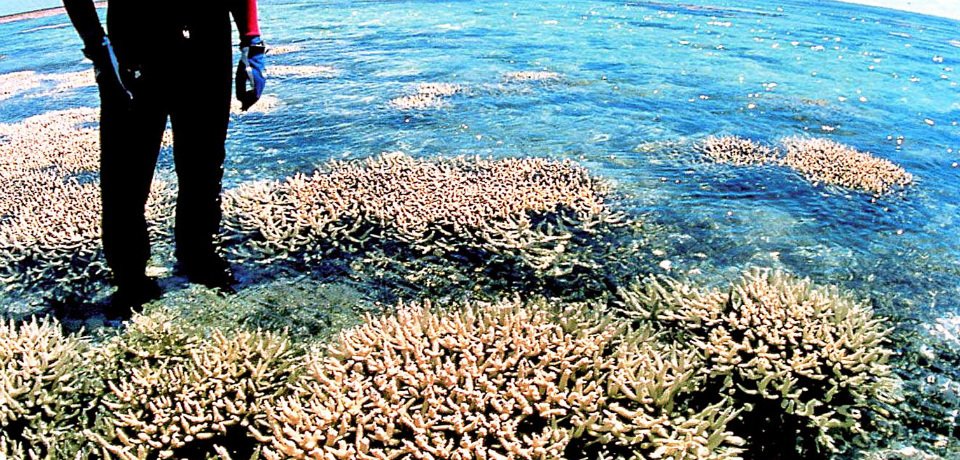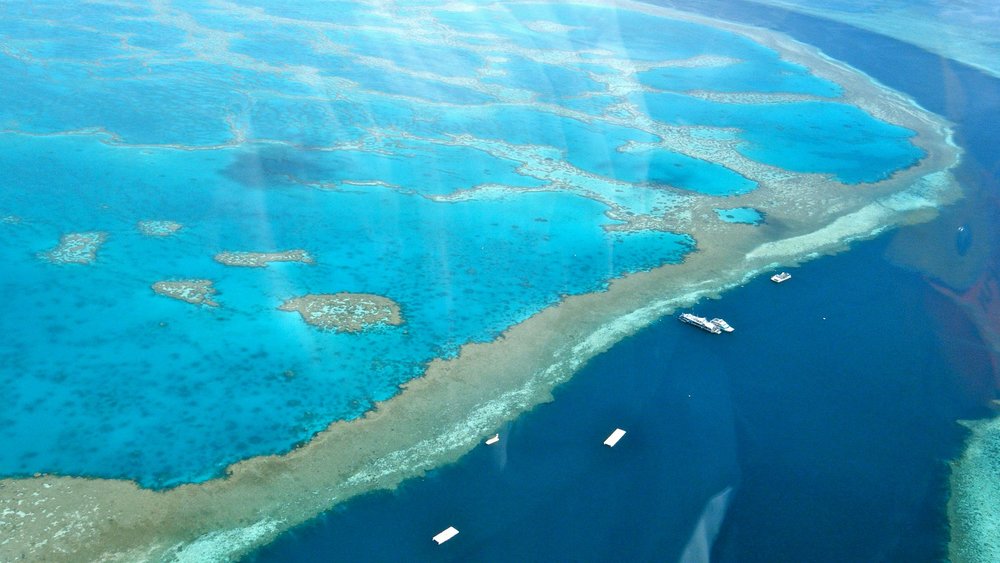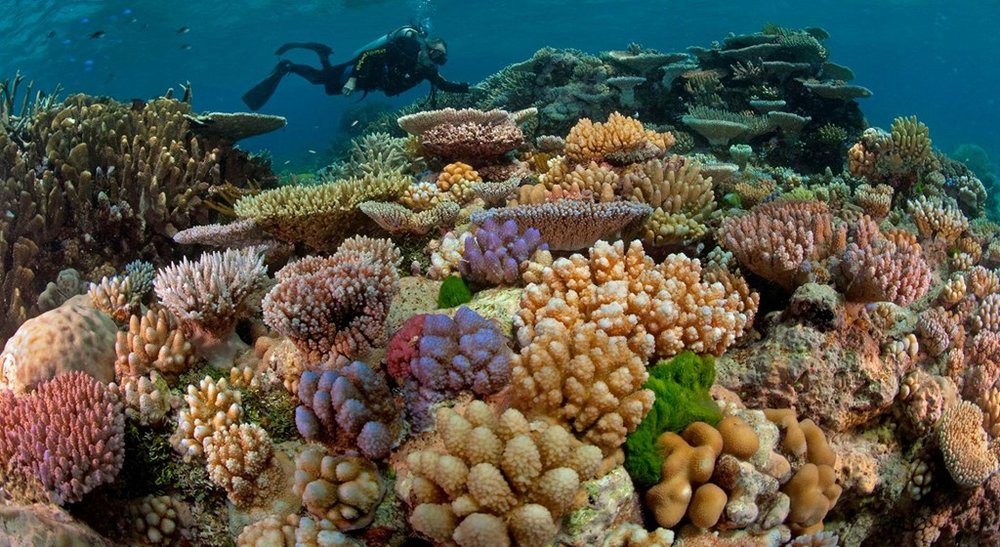
Corals in Great Barrier Reef at the Brink of Extinction!

There once existed a city so beautifully vibrant and variegated, so intertwined and water-rimmed that many believed that it was a single living entity bundled around a dazzling spine that resembled a cluster of emeralds when glimpsed from space.
People crossed oceans to soak up this magical place which opened into new emerald-colored paths, each a new avenue for nursing life. Environmentalists claimed that the city was the world’s biggest ecosystem which spanned over 2,300km – all until this year when the city’s beauty was consumed by what seemed like an invisible plague.
Tragedy in Great Barrier Reef

In 2016, as a result of the heat, more than half of the Barrier Reef’s corals were starved or scorched to death
The scenic city’s admirers watched from the sidelines as one of the world’s most beautiful places suffered massive destruction in 2016 which overran its emerald-colored avenues and forced a number of the habitat’s dwellers to escape the dying ecosystem. Those who decided to stay and weather the horrific destruction died in the famine that followed.
The summer of 2016 left the Great Barrier Reef of East Coast, Australia bereft of its beauty and brilliance, but there was nothing the experts could do to strop the ruination. So, as the unbearable heat plunged through the city, taking from it all its wealth, scientists responded by observing the damage and waiting for the heat wave to pass.
In 2016, the 2,300 km of Australia’s Great Barrier Reef was suddenly trapped under a blanket of dangerously hot water which triggered, what the scientists call, ‘an unprecedented bleaching event’. As a result, more than half of the Barrier Reef’s corals were starved to death.
Although scientists were quick to pick up on the bleaching event in 2016, they weren’t sure about its consequences until recently when a paper published in the Nature Journal pointed out the catastrophe of the mass bleaching event which resembled an autopsy report after a plague that ended half of the planet’s population.
More than Half of the Population Lost

Great Barrier Reef, Australia
The researchers thoroughly inspected each avenue inside the Great Barrier Reef surveying every species that could be found in the once-magical city, to come to a conclusion that the summer of 2016 had transformed the place permanently, and there was nothing that could be done to reverse the damage.
The northern third of the Reef, which was considered the most pristine area of the city, had less than half of its original population of corals remaining. Two of the most important species namely tabular coral, with it’s flat, fanlike structure, and staghorn coral, which resembled precious amber in color, had almost been wiped out completely from the remaining coral population.
But it wasn’t just a couple of species or a small area of the Reef that had been affected. The analysis showed that almost the entire ecosystem had suffered the damage. The author of the eye-opening study, Terry Hughes, said that the catastrophe, which lasted for almost nine months, had accounted for an average of one in three coral deaths. Hughes is the director of Australia’s federal research program called the ARC Center of Excellence for Coral Reef Studies, which, as the name implies, is dedicated to coral research.
The World Could Lose Corals in 50 years

Hugh said that if conditions don’t improve in the next 50 or 100 years, the planet could lose its entire coral population and pristine cities like the Great Barrier Reef
The ARC director said that upon the post-catastrophe inspection, it seemed like the entire ecosystem was crippled and now the city is no longer the pristine land of emerald-colored body of life – it has degraded to something much worse. Hughes says that the ecosystem looks and performs completely differently than it did three years ago. A marine biologist named John Bruno, who wasn’t involved in the study, commented that the results confirm the scientists and environmentalists’ worst fears.
But the troubles for the Great Barrier Reef did not end after the summer of 2016 was over. After scanty months of winter, the Reef was again struck by the heat of summer 2017 as the water covering the entire city began to warm up once again, starting another mass bleaching event. Hugh believes that the rising global temperatures due to climate change could be the cause of the coral destruction.
More in Medical Conditions
-
Check Your Sodium Intake—Not All Salts You Eat Are the Same
Salt is one of the most basic and most important ingredients in cooking. There are a lot of variants of salt...
November 1, 2023 -
Worried About Diabetes? Here Are Some Common Myths
There are several myths about diabetes that are frequently reported as facts. Diabetes misrepresentations can sometimes be harmful, leading to an...
June 29, 2023 -
Many Patients Pay Their Medical Costs Out Of Their Pockets – Even With Insurance
With rising inflation, it has become difficult for people to even fulfill their basic necessities. They are more concerned about how...
June 6, 2023 -
What Is The Right Weight For Kids And How To Gain Weight Healthily
Keeping your child happy and healthy is the primary concern of every parent. Parents usually focus on providing their young ones...
May 12, 2023 -
Thyroid Disorders in Children: What Parents Need to Know
Thyroid disorders are not limited to adults; they can also affect children. The thyroid gland produces hormones that play a crucial...
April 29, 2023 -
Should Doctors Attend To Patients With ‘Do Not Resuscitate Tattoos’?
Doctors at the University of Miami hospital were confronted with a dilemma when a 70-year-old unconscious man with a tattoo “do...
April 3, 2023 -
Your Antidepressant May Not Work If You Keep Doing This One Thing
People use social comparison to measure their self-worth. Social comparison has been in existence since time immemorial, and it is as...
April 1, 2023 -
Pro Tips on Preventing Hair Breakage While Keeping Your Hair Moisturized at Home
Every one of us is thinking a lot about how to forestall hair breakage and keep them moisturized at home. Since...
March 22, 2023 -
Planning to Travel After Retirement? This is the Best Medicare Coverage for You
Does Medicare insurance go with you once you are out of the country? It’s currently open enrollment period, and while planning...
March 14, 2023















You must be logged in to post a comment Login